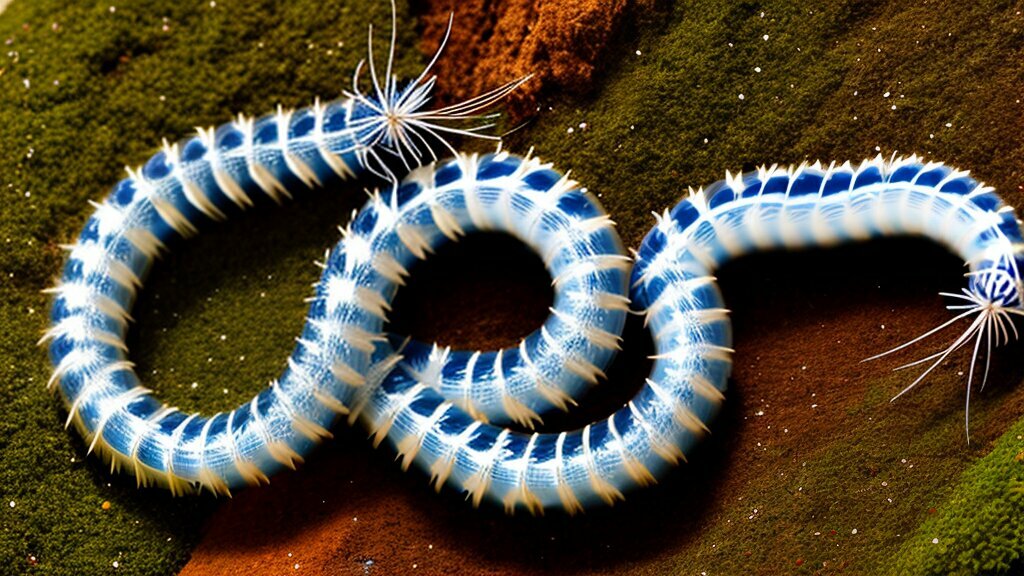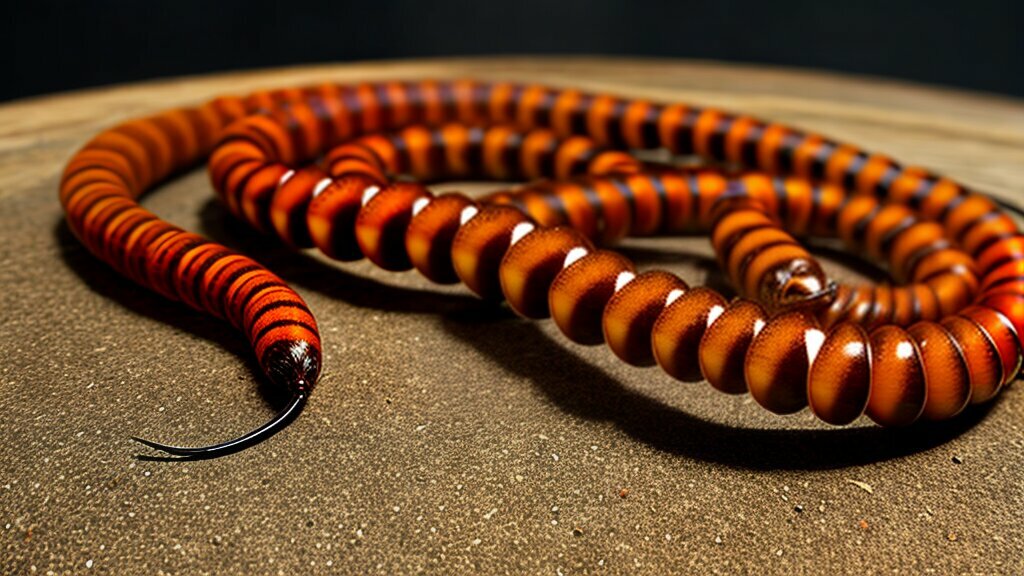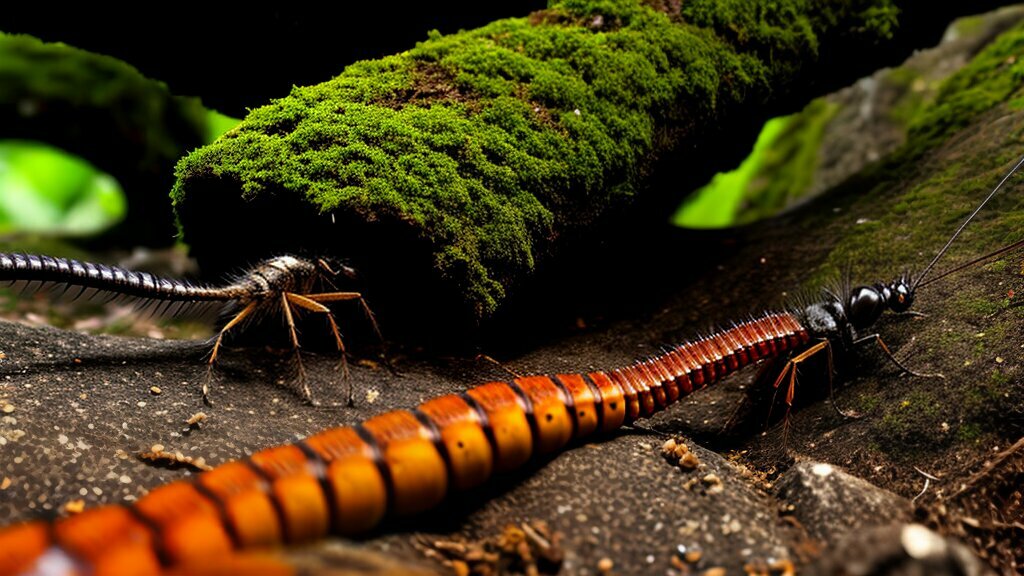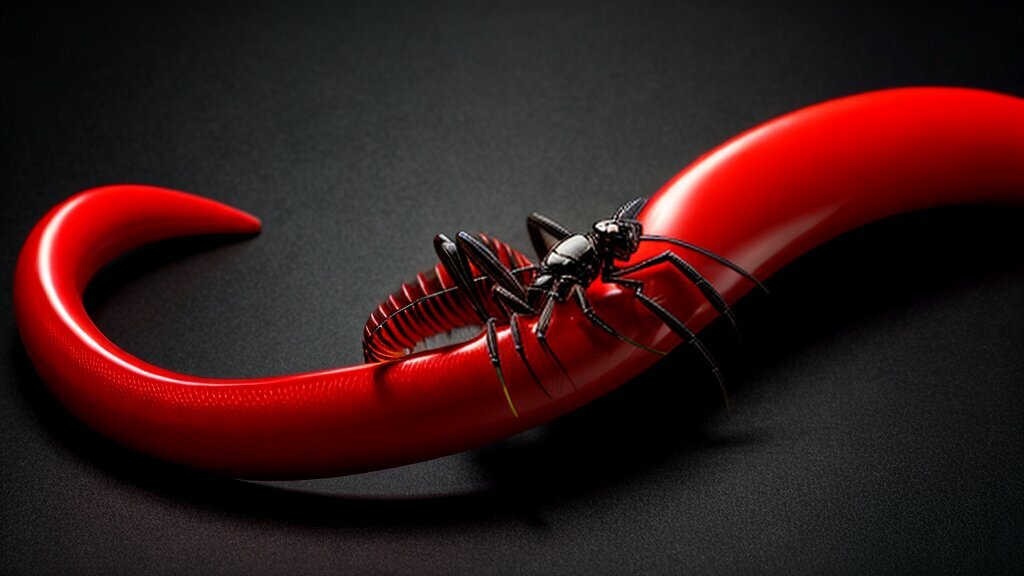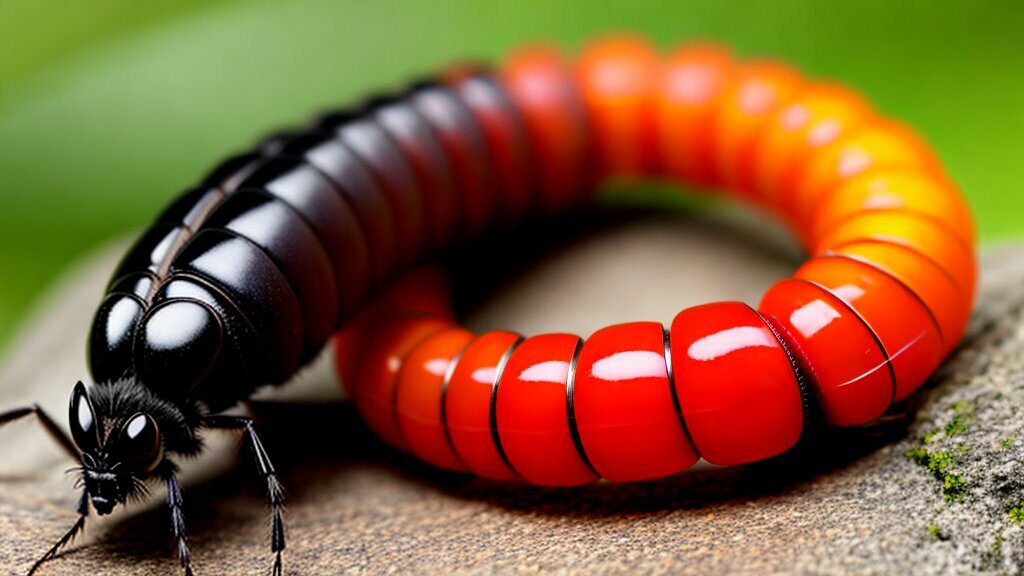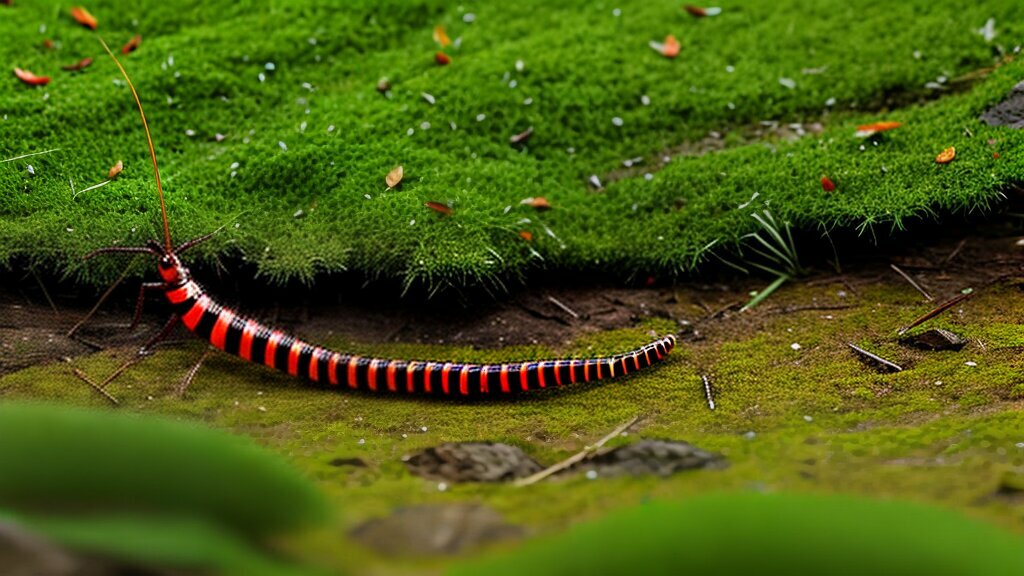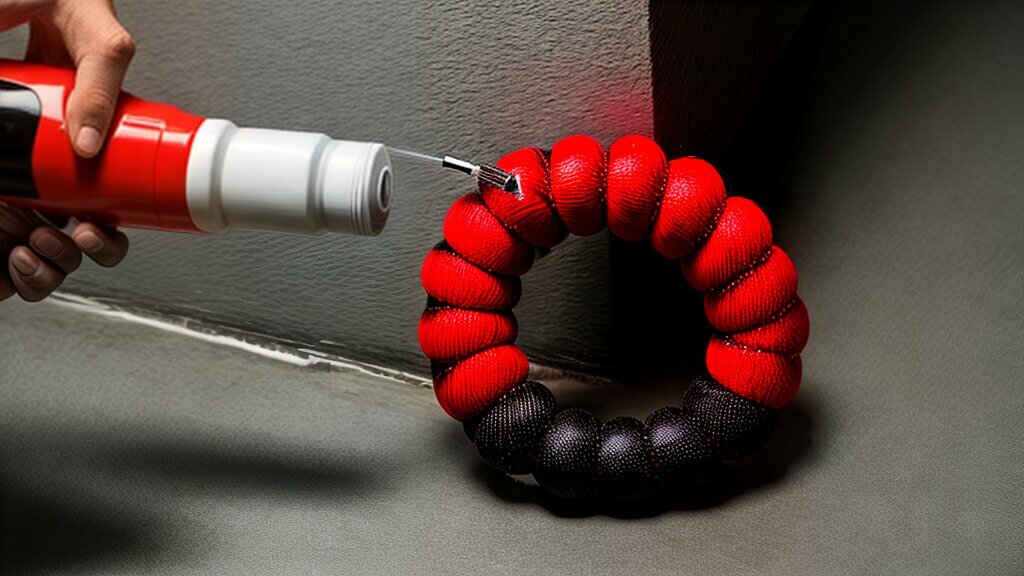Centipedes are fascinating creatures found across the world, known for their long, segmented bodies and multiple legs. While they may appear intimidating, it’s important to understand them to avoid any potential harm. In this section, we will provide an expert guide on how to identify centipedes. By recognizing their key features and characteristics, you’ll be able to differentiate between species and appreciate these unique arthropods.
Key Takeaways:
- Understanding centipede identification requires knowledge of their physical characteristics, habitats, and behavior.
- Recognizing common species and distinguishing them from similar insects is crucial for safe encounters.
- Prevention and control measures can be taken to reduce the presence of centipedes in your home or garden.
Physical Characteristics of Centipedes
Centipedes have several unique physical features that distinguish them from other common household insects. While their appearance may vary slightly by species, there are certain key characteristics that can help you identify them.
Body Structure
Centipedes have long, flattened bodies composed of many segments. The number of segments can range from 15 to over 170, depending on the species. Each segment has a pair of legs, which gives centipedes their distinctive appearance.
One notable feature of centipedes is their head, which has a pair of antennae and a set of powerful mandibles used to capture prey. Their eyes are located on the sides of their head and are relatively small compared to their body size.
Number and Arrangement of Legs
The number of legs on a centipede can vary depending on the species, but they typically have between 30 and 354 legs. The legs are arranged in pairs along the length of the body, with each pair attached to a single body segment.
The first pair of legs on a centipede is modified into powerful claws called forcipules. These claws are used to inject venom into their prey or for defense.
Coloration and Markings
Centipedes are generally brown or reddish-brown in color, but some species may have brighter colors or patterns. The coloration and markings can vary depending on the environment in which they live and can be used to help identify different species.
For example, the house centipede (Scutigera coleoptrata) has long, striped legs that are yellowish-brown in color. The Scolopendra alternans species found in the southern United States has a distinctive green color.
Distinguishing Features
In addition to the above characteristics, centipedes have several distinguishing features that can aid in their identification. These include:
- A long, flattened body
- Multiple pairs of legs
- A pair of modified claws called forcipules
- A pair of antennae on the head
- Small eyes on the sides of the head
- Brown or reddish-brown coloration
By understanding these physical characteristics, you can more easily identify centipedes and differentiate them from other insects.
Centipede Habitats and Behavior
Centipedes are found in a variety of habitats, from damp forest floors to arid deserts. They prefer dark, moist environments and can often be found in basements, crawl spaces, and bathrooms.
Centipedes are nocturnal creatures, hunting at night and hiding during the day. They hunt and feed on insects, spiders, and other small animals. They are fast and agile predators, using their venomous fangs to incapacitate their prey.
Centipedes are also known for their ability to regenerate lost legs. If they lose a leg during a fight or while hunting, they can regrow a new one. This makes them incredibly resilient and able to survive in harsh environments.
Some species of centipedes are known to be social, living in large groups and even cooperating to hunt prey. Others are solitary and territorial, marking their territory with scent markings.
It’s important to note that while centipedes are generally harmless to humans, they can inflict painful bites if threatened or provoked. It’s best to leave them alone and avoid handling them whenever possible.
Common Species of Centipedes
Centipedes come in various species, each with unique characteristics that aid in their identification. Here are some common species of centipedes found in the United States and their distinct characteristics:
| Species | Characteristics | Habitat |
|---|---|---|
| Scolopendra gigantea | Large, up to 12 inches long, yellow-orange legs, dark body | Tropical and subtropical regions, found in soil, leaf litter |
| Lithobius forficatus | Small, up to 1 inch long, brown or gray, long legs | Found in soil, leaf litter, under rocks and logs |
| Geophilus spp. | Long, up to 6 inches, 30–354 pairs of legs, brown or reddish | Moist soil, leaf litter, under rocks and logs |
Variations in size, coloration, and leg count distinguish these species from one another and aid in their identification.
Identifying Venomous Centipedes
While most centipedes are harmless, some species can deliver painful and venomous bites. It’s essential to identify venomous centipedes to avoid any potential harm.
If you are unsure about the species you have encountered, do not attempt to handle it.
Here are some key features to look for when identifying venomous centipedes:
| Characteristics | Venomous Species | Non-Venomous Species |
|---|---|---|
| Coloration | Dark-colored | Light-colored |
| Number of Legs | 15 pairs or more | Less than 15 pairs |
| Size | Larger than non-venomous species | Smaller than venomous species |
| Behavior | Aggressive and quick to bite | Timid and more likely to flee than bite |
If you encounter a venomous centipede, keep a safe distance and call a pest control professional for removal. If you are bitten by a venomous centipede, seek medical attention immediately.
Frequently Confused Insects: Similarities and Differences
Centipedes may bear certain similarities with other insects, which can cause confusion in identification. Here, we discuss the differences and similarities of centipedes with similar insects.
Insects Similar to Centipedes
Millipedes often resemble centipedes in appearance, but they have some distinguishing features. Millipedes have a rounded body and two pairs of legs per body segment, while centipedes have a flat body and one pair of legs per body segment. Additionally, millipedes are generally slower-moving and are not venomous like some species of centipedes.
Another insect that can be confused with centipedes is the silverfish. Silverfish are small, silver-gray insects with long antennae and three tail-like appendages at the end of their bodies. However, they do not possess the numerous legs characteristic of centipedes.
Distinguishing Features of Centipedes
Centipedes have several distinguishing features that set them apart from other insects. They have long, flat bodies with numerous pairs of legs, ranging from 15 to 177 pairs, depending on the species. Their bodies can range in color from brown to red, and some species may have stripes or patterns on their bodies.
Centipedes also have large, sharp fangs located at the front of their bodies, which they use to inject venom into their prey. While not all centipedes are venomous, some species have bites that can cause severe pain and other symptoms.
“It is important to identify centipedes correctly as some species can cause harm. By paying attention to their distinguishing features, you can accurately identify their species and avoid any potential harm.”
Tips for Safe Encounters with Centipedes
Encountering a centipede can be a daunting experience, especially if you’re not sure how to handle them. Here are some practical tips to help you have a safe encounter:
- Don’t panic: Although centipedes may look intimidating, most species are harmless to humans. Remain calm and avoid making sudden movements.
- Use protective gear: If you need to handle a centipede, wear gloves and protective clothing to avoid any potential bites.
- Keep a safe distance: If possible, use tools such as a broom or dustpan to move the centipede to a safer location without getting too close.
- Do not attempt to kill the centipede: Killing centipedes can release toxins, making them more dangerous. Instead, try to capture and release them outside.
- Clean up potential hiding spots: Centipedes often hide in dark, damp areas, so keep your home or garden clean and dry to discourage them from taking up residence.
By following these tips, you can safely encounter a centipede without causing harm to yourself or the centipede.
Centipede Prevention and Control
Preventing and controlling centipedes in your home or garden is essential to ensure a safe and healthy environment. Here are some helpful tips to minimize their presence:
- Seal cracks and gaps: Centipedes can enter your home through small openings. Seal any cracks in walls or floors, and gaps around windows and doors to prevent their entry.
- Declutter your home: Centipedes love cluttered spaces. Keep your home clean and tidy to reduce their hiding spots.
- Reduce moisture: Centipedes thrive in moist environments. Fix any leaks or standing water issues to minimize their presence.
- Remove debris: Remove any debris, such as rocks or wood piles, from around your home to eliminate potential habitats for centipedes.
- Use pesticides: If you have a centipede infestation, use a pesticide specifically designed for centipedes. Follow the instructions carefully and take necessary precautions to avoid harm to humans and pets.
By following these prevention and control measures, you can greatly reduce the number of centipedes in your home or garden.
Conclusion
In conclusion, identifying centipedes is an important skill to have for anyone who spends time in areas where these fascinating creatures reside, whether it be in your backyard, garden, or home. By understanding the physical characteristics and habitats of different species, you can be better equipped to spot them and differentiate them from similar insects.
If you encounter a centipede, it is important to approach it with caution and handle it carefully to avoid any potential harm. Taking preventative measures, such as reducing clutter and moisture in your home, can also help minimize the presence of centipedes.
Overall, despite their intimidating appearance, centipedes play an important role in the ecosystem and are fascinating creatures to observe. By following the tips and guidelines outlined in this article, you can safely coexist with them and appreciate their unique traits and behaviors.
FAQ
Q: How can I identify different species of centipedes?
A: To identify different species of centipedes, look for key features and characteristics such as body structure, number of legs, coloration, and other distinguishing traits.
Q: What are the physical characteristics of centipedes?
A: Centipedes have various physical characteristics that can aid in their identification, including their body structure, number of legs, coloration, and other distinguishing features.
Q: Where do centipedes live and what is their behavior?
A: Understanding the habitats and behavior of centipedes is crucial for their identification. Centipedes can be found in various habitats and have specific behaviors that set them apart.
Q: What are some common species of centipedes found in the United States?
A: There are several common species of centipedes found in the United States. Each species has distinct characteristics and habitats that can help with identification.
Q: How can I identify venomous centipedes?
A: Identifying venomous centipedes requires knowledge of the signs to look for and how to differentiate them from non-venomous species.
Q: Which insects are commonly confused with centipedes?
A: There are certain insects that bear similarities to centipedes and are often confused with them. Understanding the key differences between these insects can help with identification.
Q: How can I safely encounter centipedes?
A: To safely encounter centipedes, it is important to take precautions and know how to handle them without causing harm.
Q: What are some tips for preventing and controlling centipedes?
A: Preventing and controlling centipedes in your home or garden can be achieved through various strategies. We provide tips for reducing their presence and minimizing potential infestations.

